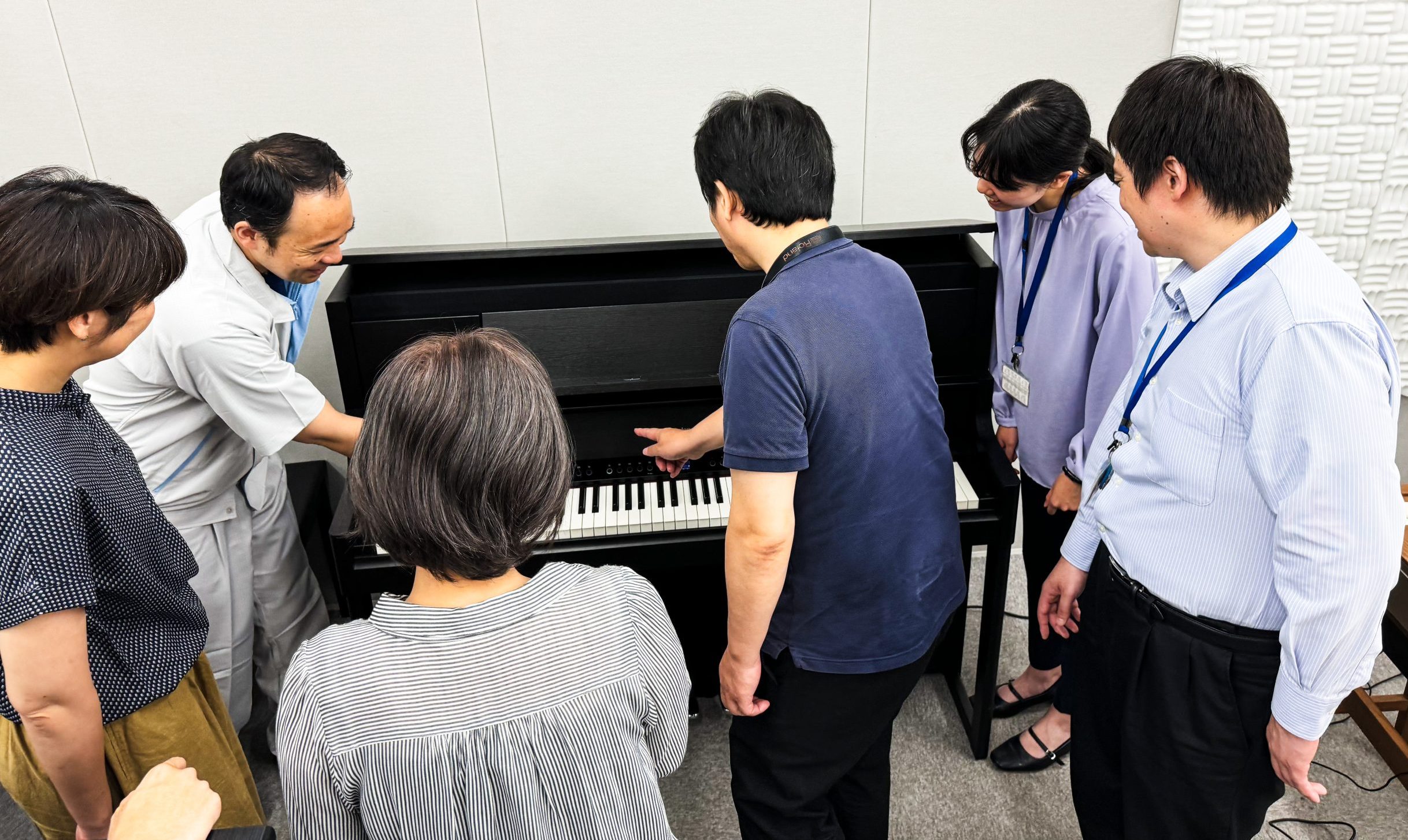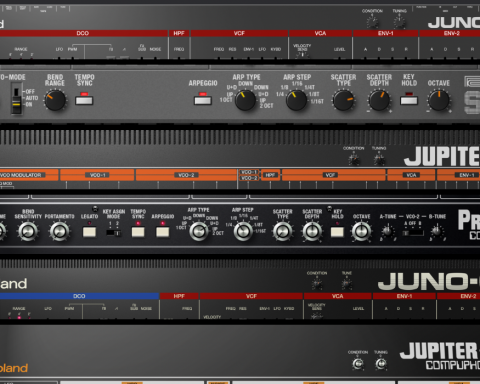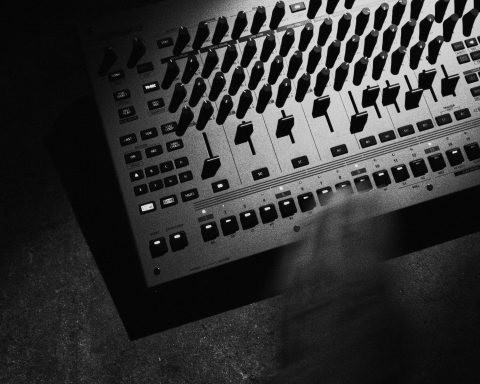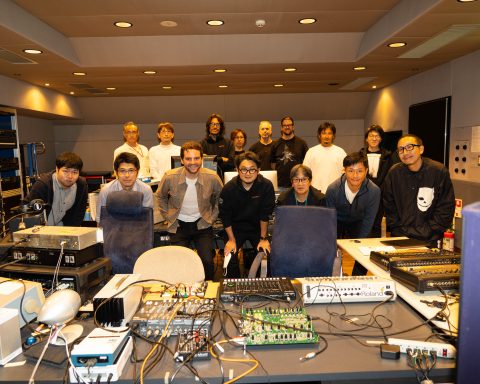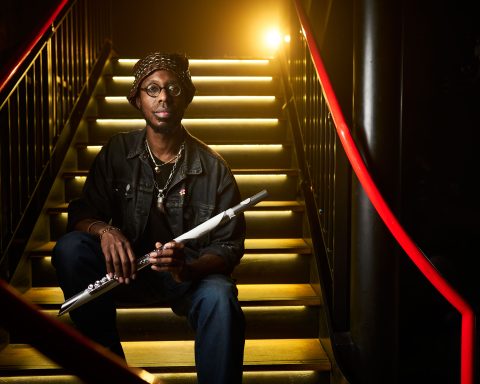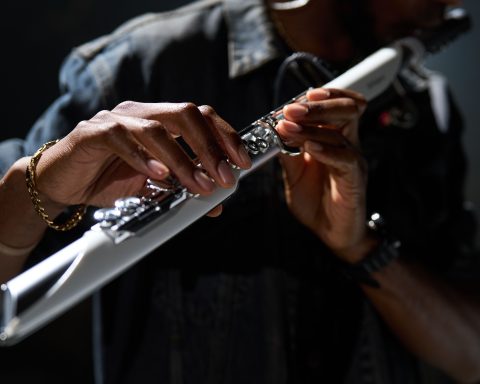From SuperNATURAL to V-Piano, Roland has a lengthy history of creating sound engines that push the boundaries of existing technologies. This tradition continues with Piano Reality Modeling, a sophisticated engine showcased in the LX and GP lines, evoking the organic sound of an acoustic piano. Members of the Hardware Design, Sound System Design, Mechanical Design, and Product Planning groups shed light on this groundbreaking new approach to piano sonics.
From the Beginning
Tell us about starting this project from scratch.
Sound System Design: We were determined to address all issues we heard from LX700 customers including dynamic range and sound image localization. We did this by incorporating the latest sound source, hardware, software, and sound system tuning methods from the GP series. The new tone was created by evaluating how it feels to play it on the keyboard and how the sound source interacts with what we actually hear.
Hardware Design: From the start of GP series development, we studied the high-quality audio circuitry and all-digital amplifiers developed for the GP series to see how to fit them into the small LX chassis. At the same time, the GP series touch switch controller was at its end of life, so we had to redesign it. It took more time than expected to reselect the integrated circuit and design around the sensor.
"We incorporated the simple modern design of the previous LX series and the GP series into the plan."
Mechanical Design
Mechanical Design: Piano Reality was developed for the GP and added to the LX series. First, we considered the design. The previous LX708/706/705 line was so modern, simple, and beautifully put together that it won both the iF Design Award 2019 and the Red Dot Design Award 2019. The design of the GP series was completed along with various new technologies for the keyboard and pedals.
We incorporated the design of the previous LX series and the GP series into the plan. Then the product manager and designer made subtle adjustments. We also improved the opening and closing mechanism of the score stand, applying torque to the moving part.
As development progressed, we assembled and reviewed the entire LX-9/6/5 line. However, we needed to redesign the LX-9 to improve the consistency and quality of the appearance. We would not compromise in our efforts to make the piano look the best it could.

Product Planning: We wanted to keep the LX foundation in the new models. While maintaining the design fundamentals, we reinvented the performance-related parts, paying careful attention to every detail. Balancing playability and appearance is always a challenge. Neither can be compromised.
Considering Sound
Were there any particular sound elements the team considered during the process?
MD: It takes a lot of trial and error to find the right speaker placement. We achieved dynamic sound by increasing the power capacity and revising the layout of the LX700 series speakers. The sound system engineers selected the speaker units and adjusted the design to ensure the proper position, angle, and structure without compromising appearance.
To incorporate the latest sound source, hardware, and firmware, we put the GP circuit boards (which are the core of the sound engine) inside the LX series. Unlike grand pianos, upright pianos have a narrow interior and space constraints. This was one of the challenging parts of the mechanical design process. In addition, we studied and optimized the internal wiring using a new simulation method using 3D CAD software.
"Balancing playability and appearance is always a challenge. Neither can be compromised. "
Product Planning
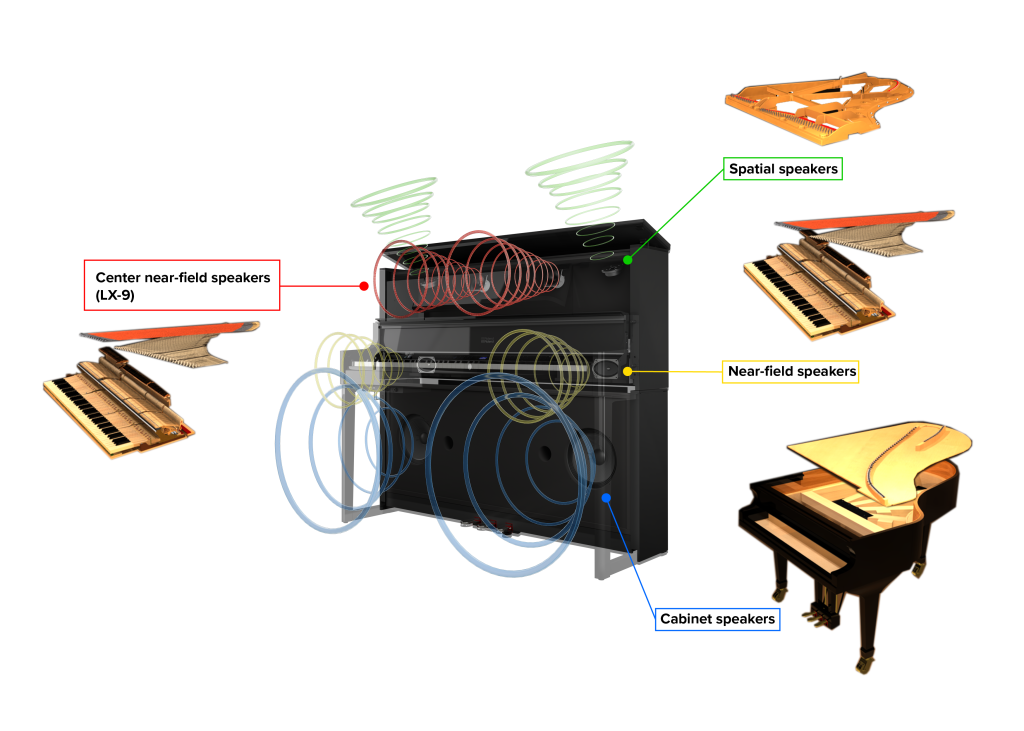
By improving the keyboard’s touch sensitivity and the accuracy of pedal detection, we enhanced the keyboard’s expressiveness. The product was shaped and completed by collaborating with groups in product planning, design, hardware, software, sound system, production, and the factory.
A Bold Approach
Why was this the right moment for a bold new approach?
Hardware Design: We wanted to bring a high-quality piano experience to more customers by packing the audio circuitry and full digital amplifier developed in the GP series into a small LX series.
Sound System Design: We wanted to feature the new sound source and sound system used in the GP series for the upright-type pianos.
"By improving the keyboard's touch sensitivity and the accuracy of pedal detection, we enhanced the keyboard's expressiveness."
Mechanical Design
MD: We introduced the previous LX series about five years ago. During this time, we put Piano Reality in the GP series, our top products, and established this new technology. To create an experience that would make more customers want to play the piano, we needed to refresh our flagship LX series.
PP: The LX series is a piano that touches more customers than the GP series. The development of the new LX series began to allow customers to experience the enhanced performance feeling that has been taken one step further.
Purity of Tone
What is the connection between the terms Pure Acoustic and Piano Reality?
SSD: Piano Reality improved the problems the development team recognized and couldn’t solve with Pure Acoustic. New characteristics include the strong tone in the lower registers and a thick tone with a core that holds firm when the key gets pressed continuously. Piano Reality also eliminates any mismatch between the strength of the key and the resulting tone.
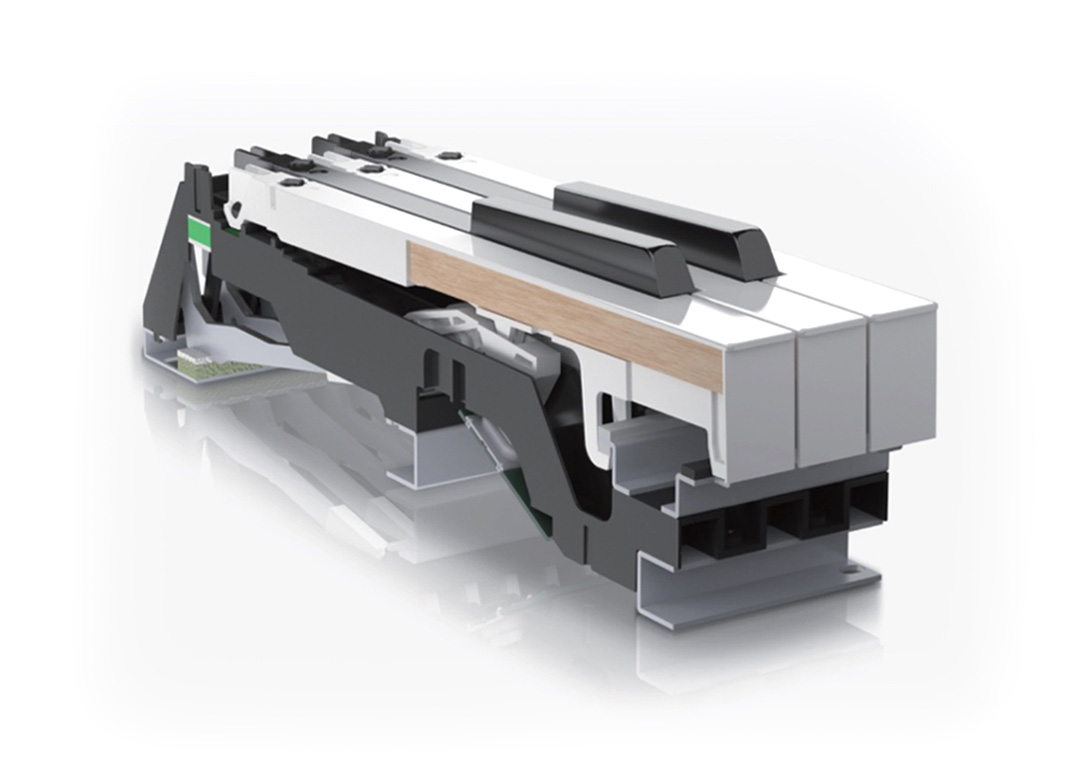
We based the sound system on spreading sound in space, enveloping a sound field, and accurate sound localization at the player’s position. These are the same concepts used in the GP series. The wide dynamic range can accommodate high-precision keyboards can express changes from pianississimo to fortississimo.
Can you describe some of the auditory benefits of Piano Reality modeling in terms of harmonics, clarity, and overtones?
SSD: The amount of overtone changes depending on the strength of the key touch, and the overtone is enriched and sustained. The resonance of the original sound source mixes with the reverberation of the cabinet interior.
"The development of the new LX series began to allow customers to experience the enhanced performance feeling that has been taken one step further."
Product Planning
The LX speakers are optimized to send different sound elements to different speakers (hammers in the center, etc.). How do they work?
HD: We placed the hardware in a limited space, thinking first and foremost about the sound delivered to the player.
SSD: Since LX-9, LX-6, and LX-5 have different cabinet sizes, the placement of each speaker and the sound element they emitted were adjusted to make it feel like a real grand piano. The speakers are divided into three main roles. The instruments reproduce the sound of a grand piano enveloping the performer in a multi-dimensional manner.
Cabinet speakers project the rich sound that supports the piano, like the sound from a soundboard or the entire cabinet. The spatial speakers emit sounds that reverberate throughout the room, such as the piano frame sound, duplex scale, reverberation of the strings, and other spatial sounds. The result is an acoustic, organic sound.

In addition, the LX-9 has two center near-field speakers mounted. These faithfully reproduce the sound localization in the front position of the player with a flowing sound movement as the keys are played from low to high and high to low.
We decided on the size and layout of each speaker with the product designer and the mechanical design engineers. While making the prototypes, we worked with DSP engineers to adjust the sound as we checked which speakers to project the three sound elements. At that time, we adjusted the position of each speaker in 1 mm/1° increments to minimize the phase interference of each speaker. Even a tiny difference can change the sound for the player.
"We test the pianos in every conceivable location—simulating a home living room, a concert hall, and a music store. In some cases, the tonal adjustment is made from scratch."
Sound System Design
A New Reality
Piano Reality was developed for LX and GP, which are top-tier products. Would you explain the advantage of debuting new technology there?
SSD: By installing Piano Reality in the GP and LX series, we are unifying the Roland sound so it can flow through all models.
PP: The GP and LX series are the flagship Roland pianos. By starting with Piano Reality on these models, customers can set high expectations for their next Roland pianos.
The latest LX and GP pianos have a new signal flow, which remains entirely digital until the final speaker conversion. How did the team arrive at this innovation?
HD: The sound source and amplifier circuit boards are integrated into the cabinet’s center, allowing digital connections. Even though it’s a digital connection, since the timing of the rise and fall of the waveform greatly affects the sound quality, the waveform gets adjusted one at a time to achieve the desired quality. This was important to us.
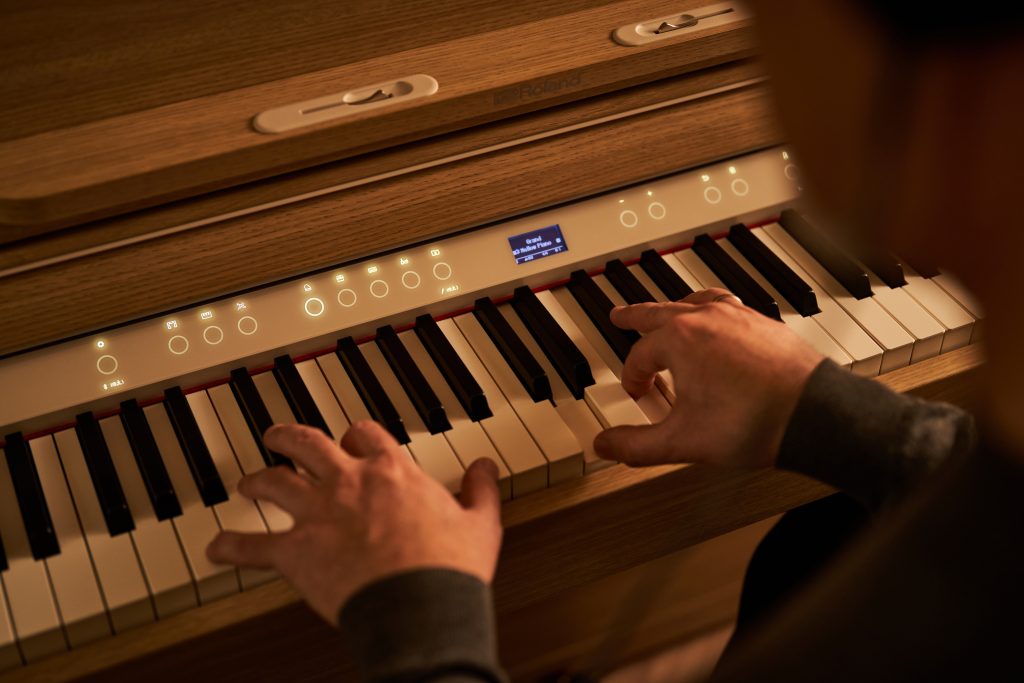
Facing Challenges
What were some design challenges unique to the Piano Reality project?
SSD: The integrity of the appearance design and sound system mechanism was a challenge, particularlty speaker unit positions and sound elements produced by each speaker. Conversion of Piano Reality from ground to upright type. Translate abstract points raised in the review into numerical parameters. The feel and satisfaction of playability, including keyboards and pedals.
Since the number, type, and layout of speaker units differed between LX-9, 6, and 5 sound systems, the speaker system had to be designed and adjusted individually. We also had to make individual adjustments and consider series unity.
We conducted field tests to achieve the desired sound in various environments. The sound of a piano changes in different ways depending on where it is placed. It’s necessary to ensure a certain level of sound output in each location, which is very difficult. We test the pianos in every conceivable location—simulating a home living room, a concert hall, and a music store. In some cases, the tonal adjustment is made from scratch.
Action and Accuracy
The keyboard sensing on the new LX and GP is two and a half times faster—perfect for trills and fast passages by proficient players. How did the team develop this new technology?
HD: To improve key scanning accuracy, the hardware scanning speed has reached its limit, and a new approach was needed, not just to increase the speed.
SD: We used a new keyboard sensing algorithm to express the desired playing expressions, such as how the keys get pressed in the middle and the subtle dynamics during the series of strokes.
PP: To achieve a more delicate performance expression, we focused on the sensing part of the keyboard controlled by the pianist and studied how to achieve this.
